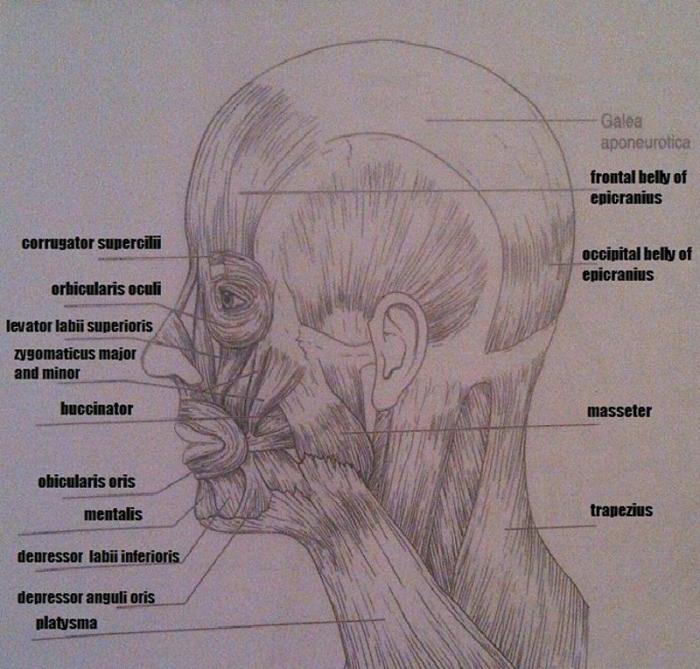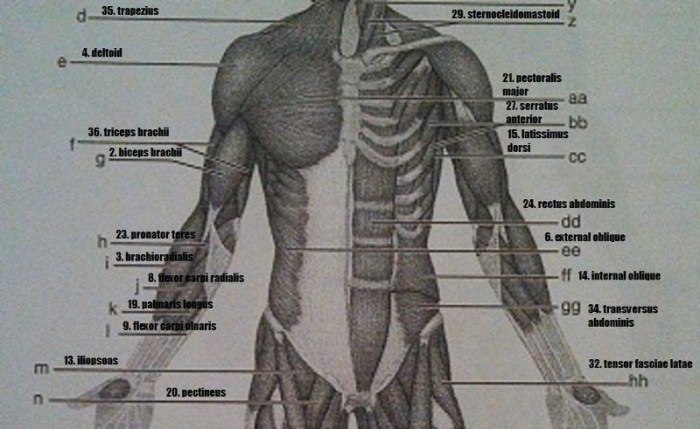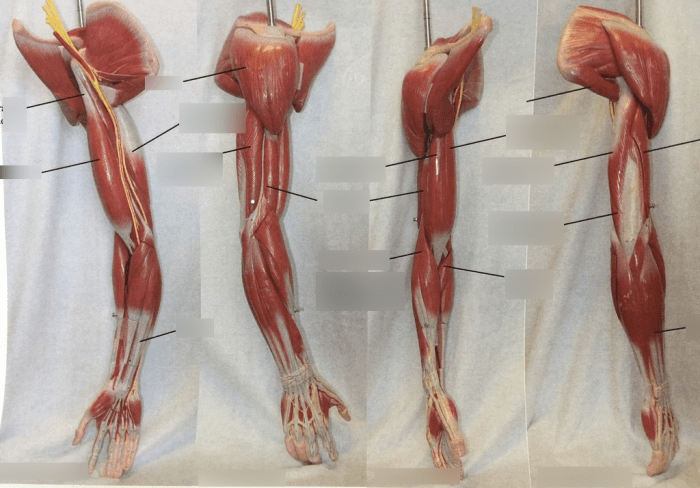Delve into the intricacies of the muscular system through Gross Anatomy of the Muscular System Review Sheet Exercise 13, an exploration that unveils the fundamentals of muscle structure, function, and clinical significance.
This review sheet guides you through a systematic examination of skeletal muscles, their attachments, actions, and innervation. Prepare to unravel the mechanisms of muscle contraction, delve into muscle physiology, and grasp the clinical relevance of muscular health and fitness.
Gross Anatomy of the Muscular System

The muscular system plays a crucial role in movement, posture, and various bodily functions. It comprises a diverse group of muscles with unique characteristics and functions.
Muscles are composed of specialized cells called muscle fibers, which contract to generate force and movement. They are classified into three main types based on their structure and function: skeletal muscles, smooth muscles, and cardiac muscles.
External and Internal Anatomy of Skeletal Muscles
Skeletal muscles are attached to bones and are responsible for voluntary movement. They have a distinct external and internal anatomy.
- External Anatomy:Skeletal muscles have a spindle-shaped appearance with two ends called origins and insertions. The origin is the fixed attachment point, while the insertion is the movable attachment point.
- Internal Anatomy:Internally, skeletal muscles are composed of bundles of muscle fibers surrounded by connective tissue. These bundles are further divided into smaller units called fascicles.
Tendons and Aponeuroses, Gross anatomy of the muscular system review sheet exercise 13
Tendons and aponeuroses are specialized connective tissues that connect muscles to bones. Tendons are thick, fibrous cords that attach muscles to bones at the origin and insertion points. Aponeuroses are broad, sheet-like structures that connect muscles to bones or other muscles.
Arrangement of Muscle Fibers
The arrangement of muscle fibers within a muscle determines its strength and function. There are three main types of fiber arrangements:
- Parallel:Fibers run parallel to the long axis of the muscle, allowing for maximum force generation.
- Pennate:Fibers are arranged at an angle to the long axis, increasing the number of fibers that can attach to the tendon.
- Circular:Fibers form concentric circles, creating a sphincter-like action.
FAQ Explained: Gross Anatomy Of The Muscular System Review Sheet Exercise 13
What is the primary function of the muscular system?
The muscular system’s primary function is to generate movement, enabling us to perform various actions, from simple gestures to complex athletic feats.
How many types of muscles are there?
There are three main types of muscles: skeletal muscles, smooth muscles, and cardiac muscles, each with distinct characteristics and functions.
What is the difference between a muscle’s origin and insertion?
The origin is the relatively fixed attachment point of a muscle, while the insertion is the more movable attachment point. Muscle contraction causes movement at the insertion point relative to the origin.


